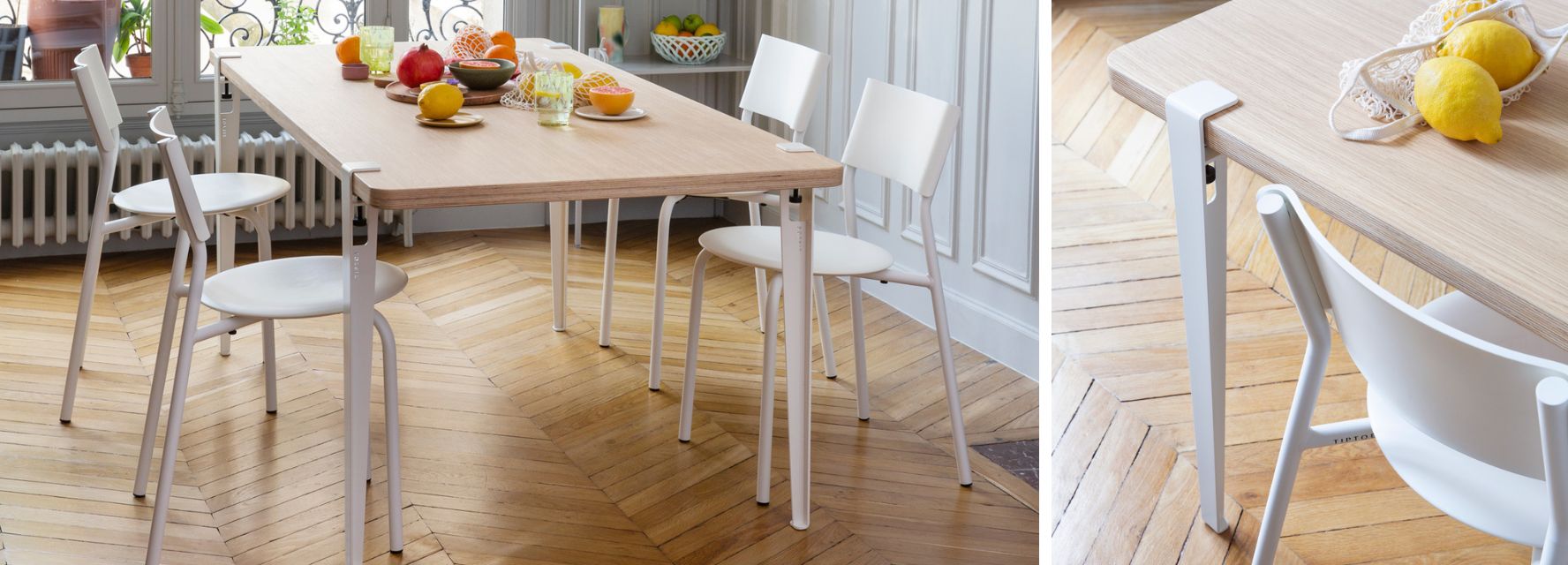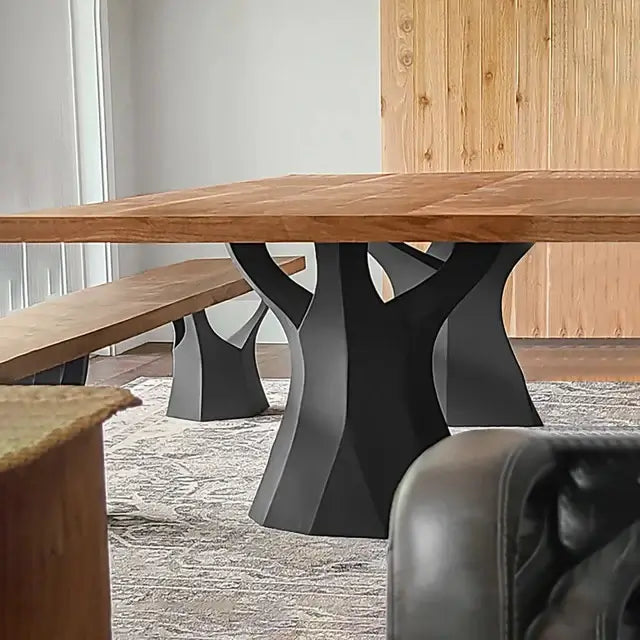Include Stamina and Appeal Utilizing Solid Dining Table Legs Wood Parts
Include Stamina and Appeal Utilizing Solid Dining Table Legs Wood Parts
Blog Article
Exploring the Different Kinds Of Table Legs Wood for Your Dining Room
The option of eating table legs wood can profoundly impact both the functional and aesthetic high qualities of your dining area. Strong timber alternatives, such as oak and walnut, provide a traditional look with unparalleled sturdiness, while engineered wood options use cutting-edge layouts that simulate the splendor of all-natural grains.
Strong Wood Options

Unlike crafted products, solid wood is less vulnerable to bending and damages over time when appropriately preserved. Each piece of solid timber is special, showcasing private attributes that add to the charm and character of the eating table.
Furthermore, strong timber can be finished in numerous ways, varying from all-natural oils to discolored surfaces, allowing property owners to personalize their furnishings to match their style. In recap, choosing solid timber for eating table legs not only ensures architectural honesty however also boosts the aesthetic charm of the dining area, making it a rewarding financial investment for any home.
Engineered Timber Alternatives

Plywood, constructed from numerous layers of wood veneer, is secure and specifically strong, making it a superb option for dining table legs. Its split composition permits it to endure changes in moisture and temperature much better than traditional strong wood. MDF, on the various other hand, offers a smooth surface area for painting or veneering, allowing developers to accomplish a sleek look while keeping structural stability.
When choosing engineered wood alternatives, it is vital to think about the desired usage and wanted visual. These products not only improve the performance of dining spaces but also allow for greater layout adaptability, making certain that traditional and modern designs can exist together sympathetically.
Reclaimed Wood Features
Reclaimed timber supplies a special mix of sustainability and personality, making it a significantly prominent option for dining table legs. Sourced from old barns, manufacturing facilities, and various other structures, reclaimed timber personifies a background that new materials merely can not duplicate. Each piece lugs its very own story, noted by unique flaws, knots, and varying grain patterns, which add to a table's special aesthetic appeal.
Along with its visual charm, reclaimed timber is an ecologically friendly alternative. By repurposing previously used products, it decreases the demand for brand-new lumber, therefore helping to decrease and save woodlands waste. This lines up with a growing consumer choice for sustainable practices in decor.
Moreover, recovered timber is often much more durable than freshly collected wood as a result of its age. The natural drying out process that recovered wood goes through results in a denser and stronger product, making it less prone to bending and splitting. This improves the long life of eating tables, allowing them to stand up to the rigors of everyday usage.
Softwood vs. Hardwood
When picking dining table legs, understanding the differences between softwood and hardwood is vital for attaining both functional and aesthetic goals. They usually display an even more rustic look, making them appropriate for informal or country-style eating areas.
On the various other hand, hardwoods, sourced from deciduous trees like oak, maple, and cherry, are renowned for their thickness, toughness, and durability. The intricate grain patterns and rich hues of hardwoods offer a advanced and timeless allure, making them excellent for official dining settings. While woods have a tendency to be a lot more costly and heavier, their resilience versus deterioration typically justifies the financial investment.
Inevitably, the option in between softwood and hardwood for dining table legs should line up with your design vision, use requirements, and budget plan, guaranteeing that your eating why not check here area reflects your individual style while continuing to be useful with time.

Treatments and finishes
The visual allure and long life of table legs can be substantially improved with various finishes and treatments. These procedures not just secure the wood from damage yet additionally raise its appearance, allowing it to complement varied interior styles.
One usual therapy is discoloring, which penetrates the timber and boosts its natural grain while adding shade. Spots offer a rich, elegant appearance, allowing property owners to match their furniture their website with existing decoration. On the other hand, clear coatings such as polyurethane or varnish develop a protective layer without altering the wood's initial color, making sure toughness against wear and tear.
In addition, natural oils, like tung or linseed oil, nurture the wood and offer a refined sheen, all while being eco-friendly. These oils permit the surface to take a breath, avoiding moisture accumulation and potential bending.
For those seeking a rustic appeal, distressed or weather-beaten coatings can be applied to develop an aged look, adding personality to the piece. Eventually, the choice of surfaces and treatments depends on individual preference, preferred aesthetic appeals, and the specific wood kind, making it important to take into consideration these elements when picking table legs for your area.
Verdict
Finally, the option of table leg materials dramatically influences both the functional and visual elements of an eating room. Strong timbers, crafted choices, and reclaimed alternatives each offer unique benefits, satisfying various preferences and requirements. Understanding the differences between softwoods and woods, along with suitable surfaces and therapies, permits educated decision-making. Inevitably, the choice of wood type ought to line up with preferred design, durability, and environmental considerations, enhancing the overall dining experience.
The choice of eating table legs timber can exceptionally affect both the aesthetic and functional top qualities of your eating area - Dining Table Legs Wood. Solid timber alternatives, such as oak and walnut, supply a traditional look with unmatched sturdiness, while engineered timber choices provide innovative designs that resemble the richness of natural grains. Strong timber uses a timeless quality that can boost the general design of an eating area. Each piece of strong wood is one-of-a-kind, showcasing specific qualities that include to the appeal and character of the eating table
Additionally, reclaimed timber is frequently more sturdy you can try this out than recently collected wood due to its age.
Report this page